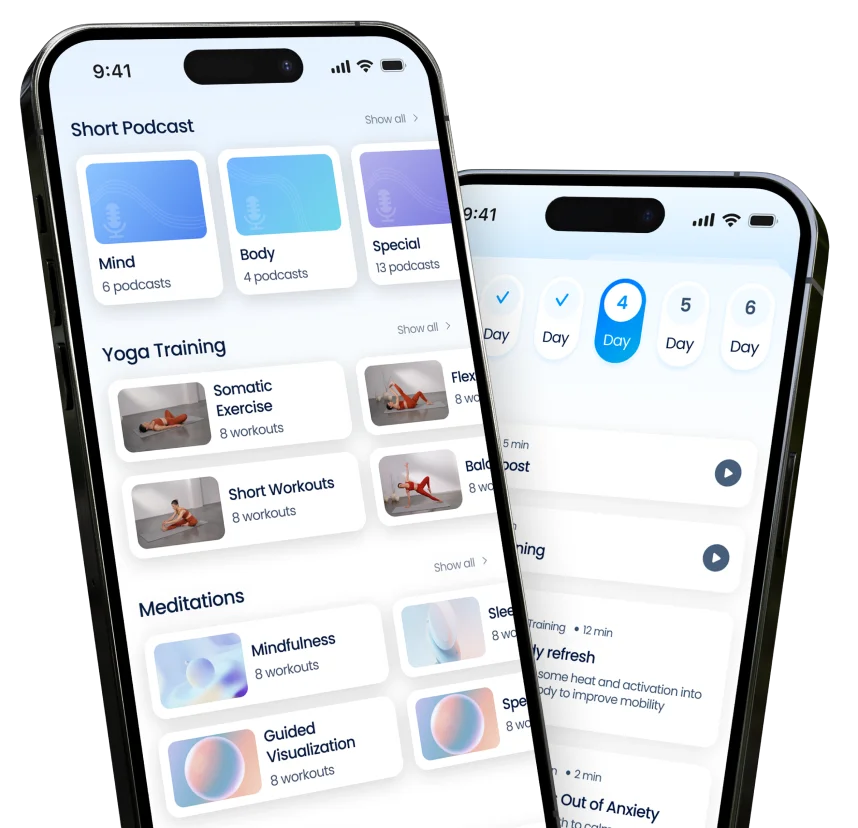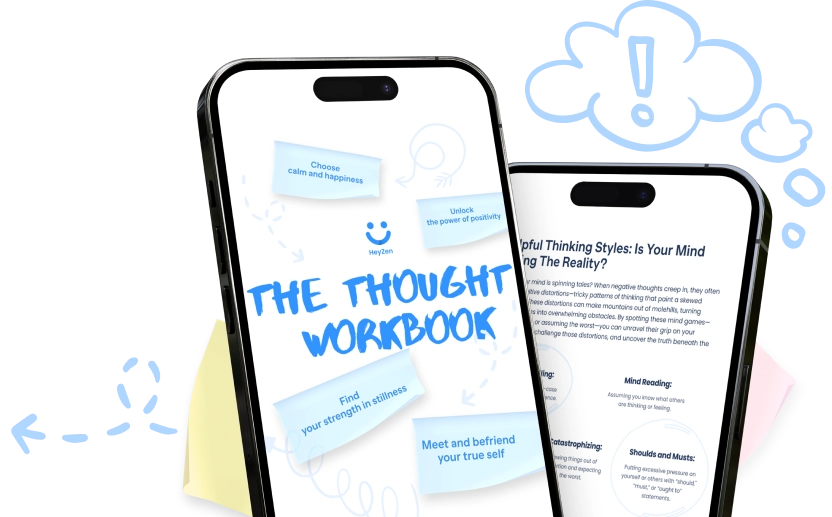10 Top Mental Health Apps for Kids: Enhance Emotional Wellness Today

Table of Contents
In today’s digital age, mental support for children has become more accessible than ever. Mental health apps are transforming how kids learn emotional regulation and self-care skills right from their devices. These innovative tools offer engaging ways to support children’s psychological well-being through interactive features like mood tracking, guided meditations, and skill-building exercises.
Whether you’re looking to help your child manage anxiety, build resilience, or develop emotional intelligence, apps for teens and younger children can be powerful resources! Let’s learn more about how to introduce these digital tools early to help your child develop crucial mental health strategies that will serve them throughout their lifetime.
Key takeaways
- 🧠 Apps for mental wellness provide convenient, engaging ways for children to learn emotional regulation, self-care skills, and develop coping strategies through interactive features and professional-backed content.
- 🔒 When selecting the right app, carefully evaluate professional credibility, age appropriateness, data protection, and parental control features to ensure a secure and supportive digital experience.
- 🤝 Apps for mental wellness should be viewed as supplementary resources, not replacements for professional therapy. Integrate app insights with ongoing communication with mental health professionals.
- 🌈 Look for apps that offer comprehensive tracking, adaptive technologies, culturally sensitive content, and personalized recommendations to support unqiue emotional wellness of your child.
- 📱 Help children develop healthy technology interactions by setting clear boundaries, monitoring screen time, and fostering open conversations about their digital mental health experiences.
- 🌟 Stay informed about innovative features like AI-powered insights, virtual reality therapy, and gamified learning to support your child’s emotional development effectively.
Mental health apps for kids: how to select?
Technology has revolutionized how children and parents approach emotional well-being in the digital age. It bridges the gap between traditional therapy and accessible support, offering children user-friendly platforms to explore and manage their mental wellness.
When selecting the right digital tool for your child, you’ll want to consider several key factors:
- Age appropriateness: Choose apps specifically designed for your child’s developmental stage, ensuring content and interactions are tailored to their cognitive and emotional understanding.
- Professional backing: Look for apps developed or reviewed by child psychologists, therapists, or mental health professionals to guarantee clinical reliability and evidence-based approaches.
- Interactive features: Prioritize apps with engaging elements like games, tracking tools, and personalized feedback that make psychological exploration fun and approachable for children.
- Parental controls: Select apps that provide transparent monitoring options, allowing you to track your child’s progress and engagement without compromising their sense of privacy.
- Data security: Verify the app’s commitment to protecting your child’s personal information, checking for robust privacy policies and secure data management practices.
By carefully evaluating these aspects, you’ll find the tools that not only support your child’s emotional growth but also make the process of learning self-care skills an enjoyable and empowering experience.
Types of mental health apps for kids and teens

Apps for mental wellness offer diverse digital solutions tailored to support youth through various emotional challenges. These specialized tools provide targeted interventions across different needs and support contexts.
For free and confidential support
- Look for apps that provide anonymous and confidential support platforms.
- Prioritize free resources that don’t require financial commitment or those that offer free trial periods.
- Choose apps with age-appropriate interfaces and content.
- Select tools offering quick, judgment-free mental health guidance.
For parents and caregivers
- Seek apps with robust parental monitoring features.
- Find tools that allow collaborative tracking of child’s emotional progress.
- Choose applications with educational resources about youth mental health.
- Select platforms offering professional insights and recommendation tracking.
For immediate help for kids in crisis
- Utilize crisis support apps with 24/7 text and chat resources.
- Download applications connected to national crisis helplines.
- Identify apps offering immediate counseling connections.
- Select platforms with multilingual support options.
For ongoing support
- Choose apps offering cognitive behavioral therapy (CBT) techniques.
- Find tools with mood tracking and journaling capabilities.
- Select platforms providing continuous skill-building exercises.
- Use applications with personalized mental wellness progression tracking.
For information and awareness
- Select educational apps explaining psychological concepts in a simple way.
- Find resources providing age-appropriate psychological information.
- Choose platforms offering interactive learning about emotions.
- Use apps with scientifically validated content.
For building self-regulation skills
- Try to use apps focusing on mindfulness and meditation.
- Choose tools promoting consistent emotional regulation practices.
- Find platforms with goal-setting and achievement tracking.
- Select applications encouraging healthy coping mechanism development.
Top mental health apps for kids

1. Pacifica (Now Sanvello)

- Offers cognitive behavioral therapy (CBT) techniques for managing anxiety and depression.
- Provides mood tracking tools to help kids understand their emotional patterns.
- Includes guided meditation and breathing exercises.
- Allows users to set personal mental health goals.
- Provides daily mood and thought challenges to build resilience.
2. Stop, Breathe & Think
- Helps kids develop mindfulness and emotional awareness.
- Features guided meditation specifically designed for children.
- Offers emotion-check-in tools to help kids identify and process their feelings.
- Provides age-appropriate meditation and breathing exercises.
- Allows users to track emotional progress over time.

3. Happify

- Uses science-based activities to boost happiness and reduce stress.
- Offers engaging games and activities that build emotional skills.
- Provides personalized tracks for different emotional challenges.
- Helps children develop positive thinking patterns.
- Includes interactive tools to improve emotional intelligence.
4. Calm Harm
- Specifically designed to help kids manage self-harm impulses.
- Provides proven methods to derail negative thought patterns.
- Offers time-based coping strategies.
- Includes multiple techniques to redirect emotional distress.
- Helps children develop healthy emotional regulation skills.

5. Virtual Hope Box

- Provides three key modes: Remind Me, Distract Me, and Relax Me.
- Allows kids to store meaningful photos and music.
- Offers relaxation exercises and coping strategies.
- Helps children stay connected during stressful times.
- Includes personalized comfort tools.
Key considerations when choosing mental health apps
And here is a bit of advice on how to make the app usage most efficient for a child:
- Always supervise app usage.
- Discuss app features with your child.
- Set clear boundaries and usage time.
- Monitor emotional progress.
- Complement app use with professional support if needed.
Choosing the right mental health app
When selecting a mental health app for your child, you’ll want to carefully consider several key factors to ensure the best possible support and protection. Here are the critical steps to guide your decision-making process:
1. Verify professional credibility
Look for apps developed with input from mental health professionals. Check for:
- Endorsements from child psychologists.
- Evidence-based techniques.
- Credentials of app developers.
- Research-backed methodologies.
2. Assess age appropriateness
Evaluate the app’s suitability for your child’s specific age group by examining:
- Content complexity.
- Visual design.
- Interactive features.
- Language and tone.
- Skill-level matching.
3. Prioritize privacy and security
Protect your child’s sensitive information by investigating:
- Transparent privacy policies.
- Data encryption methods.
- Minimal personal information collection.
- Regular security updates.
- Compliance with child protection regulations.
4. Review therapeutic features
Analyze the app’s mental health support capabilities:
- Mood tracking tools.
- Coping skill development.
- Guided meditation options.
- Cognitive behavioral therapy techniques.
- Personalized progress monitoring.
5. Check parental controls
Ensure comprehensive oversight through:
- Activity monitoring features.
- Progress tracking.
- Customizable access levels.
- Communication dashboards.
- Reporting mechanisms.
6. Evaluate user experience
Consider the app’s practical usability:
- Intuitive interface.
- Engaging design.
- Regular content updates.
- Cross-platform compatibility.
- Interactive elements that maintain child’s interest.
7. Consider cost and accessibility
Examine the financial and access aspects:
- Free vs. paid versions.
- Subscription models.
- In-app purchase options.
- Trial period availability.
- Device compatibility.
8. Read user reviews and ratings
Gather insights from actual users by:
- Checking app store ratings.
- Reading parent testimonials.
- Exploring professional review platforms.
- Investigating long-term user experiences.
- Comparing multiple perspectives.
9. Consult mental health professionals
Seek expert guidance by:
- Discussing app options with therapists.
- Getting personalized recommendations.
- Understanding potential limitations.
- Integrating app use with professional treatment.
- Receiving ongoing advice.
10. Communicate and observe your child
- Regularly discuss app experiences with your child.
- Watch for emotional changes.
- Be prepared to switch apps if needed.
- Supplement digital tools with personal support.
- Stay informed about new mental health technologies.
Integrating apps with professional support
Communicate with mental health professionals
Share app details
- Discuss specific apps you’re using with your child’s therapist.
- Provide screenshots or login details to help professionals understand app features.
- Request professional guidance on how the app complements existing treatment plans.
Request app evaluation
- Ask therapists to review the app’s therapeutic techniques.
- Seek expert validation of the app’s cognitive behavioral therapy (CBT) approaches.
- Confirm the app’s alignment with your child’s specific mental health needs.
Coordinate tracking and progress
Sync digital and professional insights
- Use mood tracking features as supplemental discussion points during therapy sessions.
- Compare app-generated emotional progression reports with professional assessments.
Develop integrated support strategies
- Create collaborative treatment plans incorporating app-based interventions.
- Design personalized coping mechanisms using both digital and professional resources.
- Establish consistent communication channels between app features and therapy goals.
Review progress regularly
- Schedule quarterly check-ins to evaluate app effectiveness.
- Adjust your wellness strategies based on professional recommendations.
- Monitor your child’s engagement and emotional response to app interventions.
Maintain flexible approach
- Be open to switching apps if current tools aren’t producing desired outcomes.
- Prioritize professional guidance over solely relying on digital platforms.
- Recognize apps as supportive tools rather than complete treatment solutions.
Digital wellbeing and screen time management
Set clear boundaries and time limits
Establish daily screen time limits
- Create consistent time restrictions for mental health app usage.
- Use built-in parental controls to automatically enforce time limits.
- Recommend 30-45 minutes maximum per day for mental wellness apps.
Create structured digital wellness schedules
- Design dedicated times for app engagement.
- Avoid screen time before bedtime.
- Implement tech-free zones in bedrooms and during family meals.
Promote balanced digital experiences
Encourage offline emotional support
- Balance app interactions with in-person conversations.
- Practice face-to-face emotional check-ins.
- Use apps as supplementary tools, not primary support.
Teach digital mindfulness
- Help children understand healthy technology interactions.
- Discuss potential digital overwhelm.
- Develop self-regulation skills for screen time management.
Privacy and safety considerations
When selecting an app for your kids, prioritizing privacy and safety is crucial. Here are key steps to protect your child’s personal information and emotional well-being:
- Review app privacy policies
Look for transparent policies that clearly explain how personal information is stored, used, and protected. - Verify data encryption
Ensure the app uses robust encryption methods to protect sensitive information. For example, look for apps that implement end-to-end encryption and follow HIPAA compliance standards for medical and mental health data protection. - Check age verification mechanisms
Select apps with strong age verification processes, appropriate content filters, and prevention of unauthorized access to personal information by third parties or other users. - Assess location tracking features
Examine the app’s location tracking capabilities. Try to choose apps that minimize location data collection and provide clear options to disable tracking features completely.
- Understand parental control options
Look for comprehensive parental control settings that allow you to:- Monitor app usage
- Review progress reports
- Control access to specific features
- Set usage time limits
- Manage communication features
- Keep track of regular decurity audits
Periodically review the app’s security features. Stay updated on:- Software updates
- New privacy features
- Potential security vulnerabilities
- Changes in data management policies
- Educate your child
Tell your child about:- Protecting personal information
- Recognizing inappropriate content
- Understanding digital boundaries
- Communicating openly about app experiences
- Consider professional recommendations
Consult pediatric mental health professionals for app recommendations. They can provide insights into the most secure and therapeutically effective apps for children.
Accessibility features in mental health apps
Mental health apps for kids have evolved to include robust accessibility features that make mental wellness support more inclusive and user-friendly. Here are key accessibility considerations to help you choose the right app:
Language and communication support
- Multilingual interfaces: Look for apps offering support in multiple languages to accommodate diverse family backgrounds.
- Text-to-speech options: Choose apps with voice-reading capabilities for children with reading difficulties.
- Translation features: Select apps that can translate content in real-time for non-native speakers.
Adaptive design eatures
- Color-blind friendly interfaces: Select apps with color schemes that are accessible to children with visual processing differences.
- Customizable text sizes: Ensure apps allow font size adjustments for children with visual impairments.
- High-contrast modes: Look for apps with adaptable visual settings to support different visual needs.
Sensory-friendly interactions
- Noise-reduction settings: Find apps with volume controls and quiet interaction modes.
- Touch-sensitive adjustments: Choose apps with customizable touch sensitivity for children with motor skill variations.
- Low-stimulation interfaces: Prioritize apps with minimal visual and auditory distractions.
Technological accessibility
- Cross-platform compatibility: Select apps that work across multiple devices and operating systems.
- Offline functionality: Look for apps with downloadable content for use without constant internet connection.
- Low-storage options: Choose apps that don’t require significant device storage.
- Simple navigation: Select apps with intuitive, easy-to-understand interfaces.
- Visual guidance: Look for apps with clear icons and step-by-step instructions.
- Reduced cognitive load: Choose apps with minimal complex interactions.
By prioritizing these features, you’ll ensure that mental health apps can support children with diverse needs, making emotional wellness support more inclusive and effective.
Emerging trends in youth mental health technology
Artificial Intelligence and personalization
AI-powered insights
- Advanced machine learning algorithms can provide personalized recommendations.
- By tracking emotional patterns, AI can suggest coping strategies tailored to your needs.
- Content and interventions can be adapted to your individual user responses.
Predictive mental health screening
- Complex algorithmic assessments can identify potential mental risks early.
- Proactive support will be possible through targeted interventions.
- Emotional challenges in youth can be detected early and hence prevented.
Integrated holistic wellness approaches
Comprehensive digital wellness platforms
- Mental health tracking can be combined with physical health monitoring.
- Sleep patterns, physical activity, and emotional well-being can all be assessed and worked through in one app. Often, with holistic health dashboards for comprehensive self-care.
Interconnected support ecosystems
- Modern apps connect mental wellness resources with professional support networks.
- Often, high-quality apps enable clear communication between users, parents, and mental health professionals.
Advanced therapeutic technology
Virtual Reality (VR) therapy modules
- Immersive therapeutic experiences for anxiety and stress management often provide safe, engaging mental health skill-building scenarios. The therapeutic effect is achieved through the use of controlled virtual environments for exposure therapy.
Gamified mental health learning
- Therapeutic techniques can be transformed into interactive, game-like experiences with reward systems and progress tracking to make the process more enjoyable. It can be the first step towards psychotherapy for youth to erase the stigma around the topic.
Community and peer support through apps
Apps have revolutionized how kids and teens can connect with supportive communities, offering safe digital spaces to share experiences and find understanding.
Anonymous support platforms:
- Create confidential spaces for teens to share feelings without fear of judgment.
- Allow users to connect with peers experiencing similar challenges.
- Provide a sense of belonging and reduced isolation through anonymous interactions.
Moderated online communities:
- Offer structured online support groups with trained volunteer moderators.
- Ensure safe communication through carefully managed digital environments.
- Help teens learn healthy communication and emotional sharing skills.
Peer matching features:
- Enable users to connect with others who have comparable experiences.
- Use algorithm-based matching to find supportive community members.
- Create opportunities for meaningful digital friendships and mutual support.
Resource sharing capabilities:
- Allow users to exchange coping strategies and supporting resources.
- Provide platforms for sharing personal stories and recovery journeys.
- Empower teens to learn from each other’s experiences and growth.
Crisis connection options:
- Link users to immediate support during challenging moments.
- Connect with trained volunteer listeners for real-time emotional assistance.
- Offer multiple communication channels like text, chat, and anonymous forums.
Cultural sensitivity in support:
- Develop community groups that respect diverse cultural backgrounds.
- Provide culturally competent support for marginalized youth.
- Create inclusive spaces that validate unique mental health experiences.
Cultural considerations in mental health apps
1. Language diversity
- Choose apps offering multilingual support to accommodate diverse linguistic backgrounds.
- Look for platforms with native language translations that preserve cultural context.
- Ensure translations aren’t just literal but capture emotional and cultural subtleties.
2. Representation and imagery
- Select apps featuring diverse characters representing multiple ethnicities.
- Verify visual content reflects various cultural backgrounds and experiences.
- Avoid stereotypical representations that might alienate or marginalize certain communities.
3. Cultural sensitivity in content
- Evaluate apps for culturally appropriate strategies.
- Seek platforms acknowledging different cultural perspectives on emotional wellness.
- Look for content that respects varied cultural beliefs about mental health and healing.
4. Customizable personal profiles
- Prioritize apps allowing personalized cultural identity settings.
- Choose platforms enabling users to select cultural backgrounds.
- Ensure profile options include comprehensive and respectful identity representations.
5. Community support features
- Investigate apps offering culturally specific support groups.
- Look for moderated communities celebrating cultural diversity.
- Select platforms with inclusive peer support mechanisms.
6. Religious and spiritual considerations
- Choose apps respecting diverse religious perspectives.
- Find platforms offering spiritually inclusive mindfulness and coping strategies.
- Verify content doesn’t impose singular worldviews.
7. Family dynamics acknowledgment
- Select apps understanding varied family structures.
- Look for tools recognizing different cultural family communication patterns.
- Ensure parental involvement features are flexible and culturally adaptable.
Measuring success and progress
Mental health apps offer powerful tools for tracking your child’s emotional well-being, but understanding how to measure their effectiveness is crucial. Here are key strategies to evaluate your child’s progress:
Quantitative metrics
1. Mood tracking consistency
- Monitor how regularly your child logs their daily emotions.
- Look for patterns of increased engagement over time.
- Notice improvements in emotional self-awareness and tracking frequency.
2. Skill development indicators
- Assess completed cognitive behavioral therapy (CBT) exercises.
- Count the number of mindfulness sessions practiced.
- Evaluate progress through in-app skill achievement badges.
Qualitative assessment methods
1. Regular communication
- Do weekly check-ins to discuss their emotions, experiences, and bothering thoughts.
- Ask your child open questions about their emotional learning, stay non-judgemental, and practice active listening.
2. Behavioral Observations
- Notice improvements in stress management.
- Observe changes in your child’s behavior and emotional vocabulary and expression.
- Identify positive or negative changes in social interactions and self-confidence.
Professional guidance metrics
- Ensure that your child is ok with your monitoring and sharing their progress.
- Share app-generated reports with mental health professionals.
- Request expert interpretation of progress data.
Combining mental and physical health
Holistic tracking features
Look for apps that simultaneously monitor mental and physical health indicators. These comprehensive platforms track:
- Mood fluctuations.
- Sleep quality.
- Physical activity levels.
- Stress responses.
- Energy management.
Mind-body connection tools
Choose apps offering integrated wellness experiences that demonstrate how physical activities impact mental health:
- Guided exercise routines linked to emotional regulation.
- Breathing techniques connected to anxiety reduction.
- Movement challenges designed to boost mood.
- Mindfulness exercises that improve physical recovery.
Personalized health dashboards
Select apps providing unified health insights through:
- Color-coded emotional and physical wellness progress.
- Interconnected tracking of mental and physical metrics.
- Personalized recommendations based on comprehensive data.
- Visual representations of health improvements.
Psychological-physical intervention strategies
Prioritize apps with multidimensional support features:
- Stress management techniques.
- Physical activity recommendations.
- Nutritional guidance aligned with emotional wellness.
- Sleep optimization strategies.
Professional integration
Seek platforms that enable seamless communication between:
- Mental health professionals.
- Physical health practitioners.
- App-based tracking systems.
- Family support networks.
Advanced AI features
Explore apps leveraging advanced technologies for comprehensive health monitoring:
- AI-powered predictive insights.
- Wearable device integrations.
- Machine learning health assessments.
- Adaptive recommendation engines.
Resources for schools and educators
Implementing mental health technology in educational settings
- Develop comprehensive digital wellness policies
Create clear guidelines for integrating digital tools in school environments. You’ll want to establish protocols that outline app selection criteria, usage parameters, and student protection measures. Prioritize apps with verified educational and therapeutic credentials that align with school counseling objectives. - Design robust consent mechanisms that:
- Require parental permission for app usage.
- Protect student data privacy.
- Ensure transparent communication about digital resources.
- Establish clear opt-out procedures for students and families.
- Involve multiple stakeholders in choosing mental health apps:
- School counselors.
- Mental health professionals.
- Technology coordinators.
- Parent representatives.
- Student advisory groups.
- Implement supervised digital platforms that:
- Provide anonymous reporting mechanisms.
- Offer immediate crisis intervention resources.
- Connect students with professional support.
- Maintain strict confidentiality protocols.
Technological assessment and monitoring
- Conduct systematic assessments of the tools for children’s health:
- Track user engagement metrics.
- Analyze student feedback.
- Monitor psychological impact indicators.
- Compare app effectiveness across different student demographics.
- Develop flexible integration strategies that:
- Accommodate diverse student needs.
- Support various learning and emotional processing style.
- Allow personalized digital mental health experiences.
- Provide scalable support frameworks.
- Develop cost-effective approach to integrate your app:
- Negotiate bulk licensing agreement.
- Seek open-source or low-cost platforms.
- Utilize free trial periods.
- Implement phased technology adoption strategies.
Collaborative support ecosystem
- Establish continuous learning and adaptation programs that:
- Update staff on emerging mental wellness technologies.
- Provide regular training on digital tools and new approaches to supporting mental wellness.
- Foster adaptive technological approaches.
- Encourage innovative support methodologies.
- Explore funding opportunities for mental wellness technology:
- Educational technology grants.
- Mental health initiative funds.
- Community wellness program sponsorships.
- Public-private partnership resources.
Future of mental health support for young people
Artificial Intelligence (AI) integration
- AI-powered mental wellness platforms will provide personalized insights by analyzing user data and behavior patterns.
- Predictive screening technologies will help identify potential mental risks earlier and more accurately.
- Machine learning algorithms will customize therapeutic recommendations based on individual user needs.
Advanced therapeutic technologies
- Virtual reality therapy modules will offer immersive anxiety management experiences.
- Gamified mental health learning platforms will increase engagement through interactive design.
- Adaptive technologies will create more inclusive and accessible mental health support tools.
Comprehensive digital wellness platforms
- Integrated health monitoring systems will track mental and physical well-being simultaneously.
- Interconnected support ecosystems will facilitate seamless communication between users and mental health professionals.
- Holistic dashboards will provide comprehensive insights into emotional and physical health markers.
- More intuitive and user-friendly interface designs will improve app engagement.
- Personalized goal-setting and progress tracking features will motivate continuous mental wellness.
- Advanced notification and intervention systems will provide timely support during critical moments.
Enhanced privacy and security features
- Advanced data protection mechanisms will prioritize user confidentiality.
- Transparent user controls will enable more personalized privacy settings.
- Multi-layered encryption technologies will safeguard sensitive mental health information.
Global and cultural accessibility
- Multilingual support platforms will expand mental health resources across diverse populations.
- Culturally sensitive content will ensure more inclusive digital mental health experiences.
- Adaptive interfaces will accommodate different learning styles and cultural perspectives.
Professional collaboration technologies
- Telehealth integration will enable real-time professional consultations.
- Seamless data-sharing protocols will improve collaborative care approaches.
- Professional endorsement frameworks will validate app effectiveness and safety.
Conclusion
Mental health apps represent a powerful and evolving digital tool for supporting children’s emotional wellness. While these apps offer incredible potential, they’re most effective when used strategically and thoughtfully. By approaching mental health apps as collaborative, adaptive tools, you can help your child develop crucial emotional intelligence and resilience in the digital age.
Resources
- Koh J, Tng GYQ, Hartanto A. Potential and Pitfalls of Mobile Mental Health Apps in Traditional Treatment: An Umbrella Review. J Pers Med. 2022 Aug 25;12(9):1376. doi: 10.3390/jpm12091376. PMID: 36143161; PMCID: PMC9505389.
- Lipschitz JM, Connolly SL, Miller CJ, Hogan TP, Simon SR, Burdick KE. Patient interest in mental health mobile app interventions: Demographic and symptom-level differences. J Affect Disord. 2020 Feb 15;263:216-220. doi: 10.1016/j.jad.2019.11.083. Epub 2019 Nov 14. PMID: 31818779
- Linardon J, Torous J, Firth J, Cuijpers P, Messer M, Fuller-Tyszkiewicz M. Current evidence on the efficacy of mental health smartphone apps for symptoms of depression and anxiety. A meta-analysis of 176 randomized controlled trials. World Psychiatry. 2024 Feb;23(1):139-149. doi: 10.1002/wps.21183. PMID: 38214614; PMCID: PMC10785982.
- Schueller SM, Wasil AR, Bunyi J, DeRubeis RJ, Weisz JR. Mental Health Apps for Children and Adolescents: A Clinician-Friendly Review. J Am Acad Child Adolesc Psychiatry. 2024 Apr;63(4):389-392.e1. doi: 10.1016/j.jaac.2023.07.1004. Epub 2023 Dec 18. PMID: 38123125.









